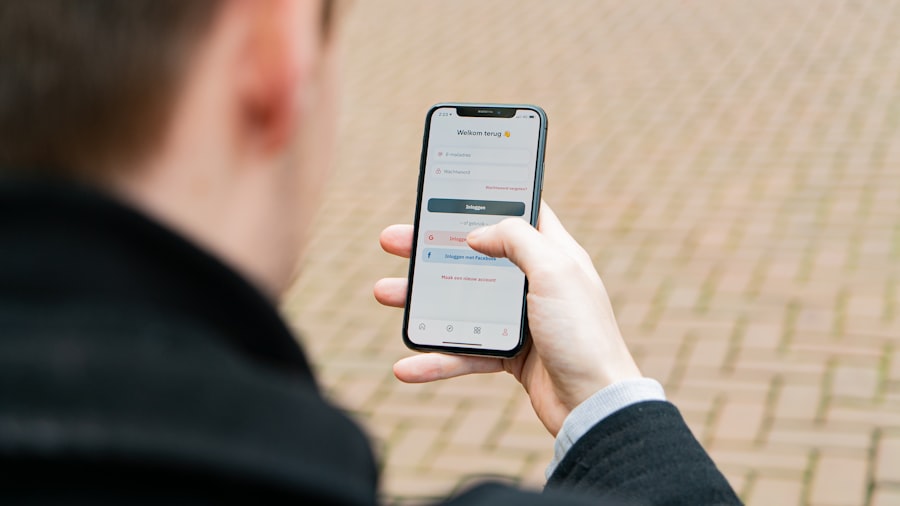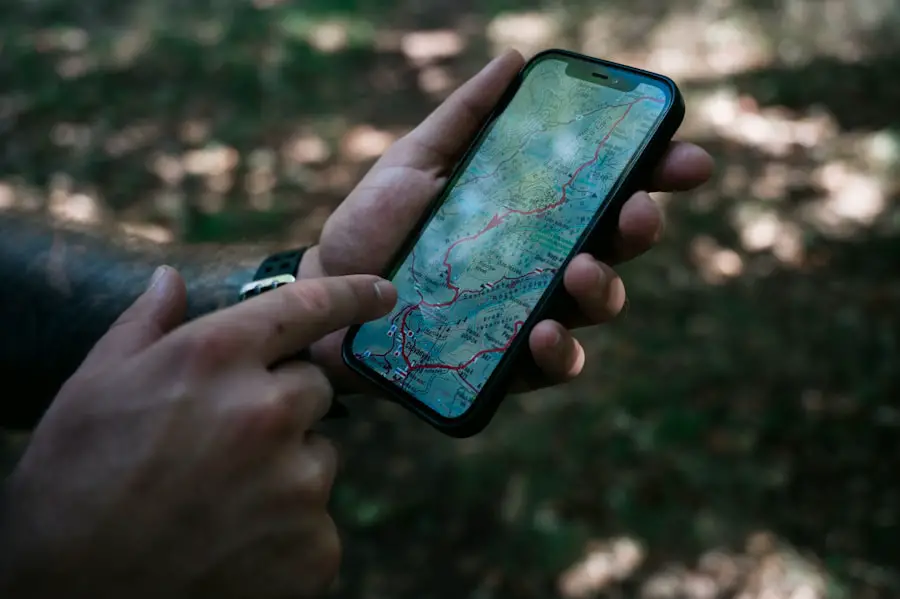Find My iPhone is a powerful feature integrated into Apple’s ecosystem, designed to help users locate their devices in the event of loss or theft. This service is part of the broader Find My app, which combines the functionalities of Find My iPhone and Find My Friends into a single platform. When activated, Find My iPhone allows users to track the location of their devices on a map, play a sound to help locate them, lock the device remotely, or even erase its data to protect personal information.
The service utilizes GPS, Wi-Fi, and cellular data to pinpoint the device’s location, making it an invaluable tool for anyone who has ever misplaced their phone. The importance of Find My iPhone extends beyond mere convenience; it serves as a critical security measure. In an age where smartphones contain vast amounts of personal information, the ability to track and manage a lost device can prevent identity theft and unauthorized access to sensitive data.
Moreover, the feature is not limited to iPhones alone; it can also be used to locate iPads, Macs, Apple Watches, and AirPods, thereby providing comprehensive coverage for all Apple devices. Understanding how this feature works and its implications for privacy and security is essential for any Apple user.
Key Takeaways
- Find My iPhone is a feature that allows users to locate their lost or stolen iPhone using GPS and internet connection.
- To enable Find My iPhone, go to Settings, tap on your name, select iCloud, and then turn on Find My iPhone.
- You can freeze the location of your iPhone on Find My iPhone to prevent it from updating its location.
- To freeze the location of your iPhone on Find My iPhone, go to iCloud.com, sign in with your Apple ID, select Find iPhone, and then click on your device and choose “Lost Mode.”
- Freezing the location of your iPhone on Find My iPhone can prevent unauthorized access to your location data and protect your privacy.
- Common issues with freezing Find My iPhone location include inaccurate location updates and difficulty in accessing the feature.
- Best practices for using Find My iPhone include regularly updating your device’s location, keeping your Apple ID secure, and enabling two-factor authentication.
- Alternatives to Find My iPhone include Google’s Find My Device for Android devices and third-party apps like Prey and Cerberus.
How to Enable Find My iPhone
Enabling Find My iPhone is a straightforward process that can be completed in just a few steps. First, users need to ensure that they are signed in to their Apple ID on their device. This can be done by navigating to the Settings app and tapping on the user’s name at the top of the screen.
Once signed in, users should scroll down to find the “Find My” option. Tapping on this will lead them to a new menu where they can activate the Find My iPhone feature. It is crucial to toggle the switch to the “On” position.
In addition to enabling Find My iPhone, users should also consider activating the “Send Last Location” feature. This option automatically sends the device’s last known location to Apple when the battery is critically low. This can be particularly useful in situations where a device may be lost and out of battery power.
By taking these steps, users can ensure that they have maximized their chances of recovering their device should it ever go missing.
How to Freeze Find My iPhone Location

Freezing the location of Find My iPhone is a concept that may seem counterintuitive at first glance. Typically, users want real-time tracking capabilities to locate their devices quickly. However, there are scenarios where freezing the location can be beneficial, such as when a user wants to prevent others from tracking their movements or when they are in a situation where they feel their privacy may be compromised.
Freezing the location essentially means that the device will not update its location on the map until the feature is disabled. To freeze the location effectively, users must understand that this is not a built-in feature of Find My iPhone but rather a workaround that involves disabling location services temporarily. By turning off location services for Find My iPhone, users can stop their device from updating its location in real-time.
This can provide a sense of security in certain situations but should be used judiciously, as it also means that if the device is lost or stolen during this time, it will be more challenging to locate.
Steps to Freeze Find My iPhone Location
| Step | Description |
|---|---|
| 1 | Open the Settings app on your iPhone |
| 2 | Tap on your Apple ID at the top of the screen |
| 3 | Select “iCloud” from the list of options |
| 4 | Scroll down and tap on “Find My iPhone” |
| 5 | Toggle off the “Find My iPhone” switch |
To freeze the location of Find My iPhone, users need to follow a series of steps that involve adjusting settings on their device. First, open the Settings app and scroll down to find “Privacy & Security.” Tapping on this option will lead users to various privacy settings related to location services. Here, they should select “Location Services,” which will display a list of apps and services that utilize location data.
Once in the Location Services menu, users should scroll down until they find “Find My.” Tapping on this option will reveal additional settings specific to Find My iPhone. To freeze the location, users need to toggle off the switch next to “Allow Location Access.” This action will prevent Find My iPhone from updating its location on the map until location services are re-enabled. It is important for users to remember that while this method effectively freezes their location, it also disables other location-based features associated with their device.
Benefits of Freezing Find My iPhone Location
Freezing the location of Find My iPhone can offer several benefits depending on the user’s circumstances. One significant advantage is enhanced privacy. In situations where individuals may feel uncomfortable with others being able to track their movements—such as during sensitive meetings or personal situations—freezing their location can provide peace of mind.
It allows users to maintain control over who can see their whereabouts without completely disabling Find My iPhone. Another benefit is related to battery conservation. When location services are active, they can drain battery life significantly due to constant GPS tracking and updates.
By freezing the location temporarily, users can conserve battery power while still retaining access to Find My iPhone’s other features. This can be particularly useful during long trips or when users are away from charging options for extended periods.
Troubleshooting Common Issues with Freezing Find My iPhone Location

While freezing the location of Find My iPhone can be beneficial, users may encounter some common issues during this process. One frequent problem is forgetting to re-enable location services after freezing them. Users may find themselves unable to locate their device if it goes missing because they neglected to turn location services back on.
To avoid this issue, it is advisable for users to set reminders or create a routine for checking their settings regularly. Another potential issue arises from confusion about how freezing affects other functionalities of the device. Users might mistakenly believe that freezing their location will prevent them from using other features within Find My iPhone, such as playing a sound or remotely locking their device.
It is essential for users to understand that while freezing the location stops real-time updates, other features remain operational and can still be utilized effectively.
Best Practices for Using Find My iPhone
To maximize the effectiveness of Find My iPhone, users should adopt several best practices that enhance both security and usability. First and foremost, keeping the feature enabled at all times is crucial for ensuring that devices can be located when needed. Users should also regularly check their Apple ID settings and ensure that they are signed in correctly, as this is fundamental for accessing Find My iPhone.
Additionally, users should familiarize themselves with all functionalities within the Find My app beyond just locating devices. For instance, understanding how to set up geofencing alerts can notify users when a device leaves a designated area, adding an extra layer of security. Regularly updating devices with the latest software ensures that all features function optimally and that any security vulnerabilities are addressed promptly.
Alternatives to Find My iPhone
While Find My iPhone is an excellent tool for Apple users, there are alternative solutions available for those who may not use Apple devices or seek additional features. One popular alternative is Google’s Android Device Manager (now part of Google’s Find My Device), which offers similar functionalities for Android users. This service allows users to locate their devices on a map, ring them, lock them remotely, or erase data if necessary.
For those looking for more comprehensive tracking solutions, third-party applications like Life360 provide family locator services that go beyond simple device tracking. Life360 allows family members to share their locations with one another in real-time and includes features such as driving reports and emergency alerts. These alternatives cater to various needs and preferences while ensuring that users have options beyond Apple’s ecosystem for locating lost devices or enhancing personal safety.
If you are looking for more information on how to freeze Find My iPhone location, you may want to check out the article on GetiPhoneInfo.com. This website provides detailed guides and tutorials on various iPhone-related topics, including tips on how to protect your privacy and contact information for further assistance. For more information, you can visit their website here.
FAQs
What is Find My iPhone?
Find My iPhone is a feature developed by Apple that allows users to locate their lost or stolen iPhone, iPad, Mac, or Apple Watch using another Apple device or through iCloud.com.
Can I freeze the location of my iPhone on Find My iPhone?
No, it is not possible to freeze the location of your iPhone on Find My iPhone. The location is continuously updated as long as the device is connected to the internet.
How can I temporarily disable the location tracking on my iPhone?
To temporarily disable the location tracking on your iPhone, you can turn off the “Share My Location” feature in the Settings app. This will stop your device from sharing its location with others.
Can I prevent someone from tracking my iPhone using Find My iPhone?
If you suspect that someone is tracking your iPhone using Find My iPhone without your permission, you can change your Apple ID password to prevent unauthorized access to your account and location information.
Is it possible to fake the location of my iPhone on Find My iPhone?
It is not possible to fake the location of your iPhone on Find My iPhone. The location is determined using GPS, Wi-Fi, and cellular data, and cannot be manipulated by the user.










